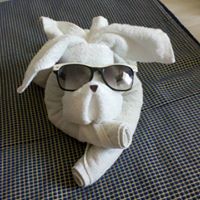Qin Wang
age ~41
from Redmond, WA
- Also known as:
-
- Qi N Wang
Qin Wang Phones & Addresses
- Redmond, WA
- San Jose, CA
- 15990 SW Catbird Ln, Beaverton, OR 97007
- Albany, CA
- West Roxbury, MA
- Newark, DE
Work
-
Company:Montage services, inc - San Francisco, CAJun 2012
-
Position:Associate
Education
-
School / High School:University of California, Davis School of Law- Davis, CAMay 2012
-
Specialities:J.D. in Business Law Journal
Languages
English
Specialities
Acupuncture
Lawyers & Attorneys

Qin Wang - Lawyer
view sourceAddress:
King & Wood Prc Law Firm (Shenzhen Office)
(755)2216717 (Office)
(755)2216717 (Office)
Licenses:
New York - Currently registered 2010
Education:
Tulane University Law School

Qin Wang, San Francisco CA - Lawyer
view sourceAddress:
Montage Services Inc.
140 Geary St Ste 1000, San Francisco, CA 94108
(415)6599778 (Office)
140 Geary St Ste 1000, San Francisco, CA 94108
(415)6599778 (Office)
Licenses:
New York - Currently registered 2012
Education:
Uc Davis School of Law
License Records
Qin Wang
License #:
226938
Category:
Physician
Issued Date:
Nov 20, 2002
Type:
MEDICINE
Name / Title
Company / Classification
Phones & Addresses
President
TECH INVENTION AND INNOVATION INC
12 Dinsmore Ct, Cambridge, MA 02138
12 Dinsmore Ct Cambridge Ma 02138 Usa<Br/>12 Dinsmore Ct, Cambridge, MA 02138
12 Dinsmore Ct Cambridge Ma 02138 Usa<Br/>12 Dinsmore Ct, Cambridge, MA 02138
U.S.A. Soca International Trading, LLC
Import and Wholesale Distribution of Cam · Whol Nondurable Goods
Import and Wholesale Distribution of Cam · Whol Nondurable Goods
1510 Fashion Is Blvd, San Mateo, CA 94404
77 Van Ness Ave, San Francisco, CA 94102
333 1 St, San Francisco, CA 94105
77 Van Ness Ave, San Francisco, CA 94102
333 1 St, San Francisco, CA 94105
Jshire LLC
6392 Slida Dr, San Jose, CA 95129
MQ GLOBAL LC
Owner
Subway Sandwich
Eating Place · Sandwichessubmarines
Eating Place · Sandwichessubmarines
77 Van Ness Ave, San Francisco, CA 94102
Secretary
Ew International Investments, Inc
333 1 St, San Francisco, CA 94105
Us Patents
-
Closed Loop Automated Matrix Removal
view source -
US Patent:20060133964, Jun 22, 2006
-
Filed:Oct 18, 2005
-
Appl. No.:11/254030
-
Inventors:Thomas Bailey - San Jose CA, US
Michael Ahern - Mountain View CA, US
Michael West - San Jose CA, US
Qin Wang - San Jose CA, US
Zhenbiao Wang - Fremont CA, US
James Tappan - Sunnyvale CA, US -
International Classification:G01N 33/00
-
US Classification:422099000, 422068100
-
Abstract:An automated matrix removal module is configurable to automatically withdraw a portion of sample containing an interfering matrix. The module is further configurable to mix the portion of sample with a reagent selected to react with the matrix to form a precipitant and then filter the mixture of sample and precipitant reagent through a filter. Finally, the module is further configurable to flush the precipitant from the filter.
-
Methods And Apparatus For Determination Of Halohydrocarbons
view source -
US Patent:20130029427, Jan 31, 2013
-
Filed:Apr 14, 2011
-
Appl. No.:13/640312
-
Inventors:Harmesh K. Saini - Santa Clara CA, US
Michael J. West - San Jose CA, US
Qin Wang - San Jose CA, US
James Garvey - San Jose CA, US
Paul Rand - San Jose CA, US
Marc Angelo - San Jose CA, US
David Johnston - San Jose CA, US
Robert Ormond - San Jose CA, US
Ye Han - San Jose CA, US -
International Classification:G01N 21/75
-
US Classification:436125, 422 8205
-
Abstract:A real-time, on-line method and analytical system for determining halohydrocarbons in water which operate by (1) extracting on-line samples; (2) purging volatile halohydrocarbons from the water (e.g., with air or nitrogen); (3) carrying the purge gas containing the analytes of interest over a porous surface where the analytes are adsorbed; (4) recovering the analytes from the porous surface with heat (thermal desorption) or solvent (solvent elution) to drive the analytes into an organic chemical mixture; (5) generating an optical change (e.g., color change) in dependence upon a reaction involving the analytes and a pyridine derivative; and (6) measuring optical characteristics associated with the reaction to quantify the volatile halogenated hydrocarbon concentration.
-
Neural Tagger With Deep Multi-Level Model
view source -
US Patent:20220284191, Sep 8, 2022
-
Filed:Mar 5, 2021
-
Appl. No.:17/194118
-
Inventors:- Redmond WA, US
Gonzalo ANIANO PORCILE - Redmond WA, US
Yu GAN - Redmond WA, US
Qin Iris WANG - Redmond WA, US
Haichao WEI - Redmond WA, US
Huiji GAO - Redmond WA, US -
International Classification:G06F 40/295
G06N 3/08
G06N 3/04
G06F 40/35
G06F 16/953 -
Abstract:Embodiments of the described technologies are capable of reading a text sequence that include at least one word; extracting model input data from the text sequence, where the model input data includes, for each word of the text sequence, segment data and non-segment data; using a first machine learning model and at least one second machine learning model, generating, for each word of the text sequence, a multi-level feature set; outputting, by a third machine learning model, in response to input to the third machine learning model of the multi-level feature set, a tagged version of the text sequence; executing a search based at least in part on the tagged version of the text sequence.
-
Tilted Transfer Gate For Advanced Cmos Image Sensor
view source -
US Patent:20220278148, Sep 1, 2022
-
Filed:Feb 26, 2021
-
Appl. No.:17/187396
-
Inventors:- Santa Clara CA, US
Qin Wang - San Jose CA, US -
International Classification:H01L 27/146
-
Abstract:A pixel circuit includes a trench etched into a front side surface of a semiconductor substrate. The trench includes a bottom surface etched along a crystalline plane and a tilted side surface etched along a crystalline plane that extends between the bottom surface and the front side surface. A floating diffusion is disposed in the semiconductor substrate beneath the bottom surface of the trench. A photodiode is disposed in the semiconductor substrate beneath the tilted side surface of the trench and is separated from the floating diffusion. The photodiode is configured to photogenerate image charge in response to incident light. A tilted transfer gate is disposed over at least a portion of the bottom surface and at least a portion of the tilted side surface of the trench. The tilted transfer gate is configured to transfer the image charge from the photodiode to the floating diffusion.
-
Flare-Suppressing Image Sensor
view source -
US Patent:20230035130, Feb 2, 2023
-
Filed:Aug 2, 2021
-
Appl. No.:17/392023
-
Inventors:- Santa Clara CA, US
Qin WANG - San Jose CA, US
Chao NIU - Santa Clara CA, US -
International Classification:G02B 3/00
H04N 5/357
H04N 5/369 -
Abstract:Embodiments disclosed herein reduce petal flare. A flare-suppressing image sensor includes a plurality of pixels including a first set of pixels and a second set of pixels. The flare-suppressing image sensor further includes plurality of microlenses, where each microlens is aligned to a respective one of the first set of pixels. The flare-suppressing image sensor further includes plurality of sub-microlens, where each microlens array is aligned to a respective one of the second set of pixels.
-
Pixel, Associated Image Sensor, And Method
view source -
US Patent:20210151487, May 20, 2021
-
Filed:Nov 20, 2019
-
Appl. No.:16/689938
-
Inventors:- Santa Clara CA, US
Qin WANG - San Jose CA, US
Gang CHEN - San Jose CA, US -
International Classification:H01L 27/146
H01L 29/423
H01L 29/66
H01L 29/78 -
Abstract:A pixel includes a semiconductor substrate, a photodiode region, a floating diffusion region, and a dielectric layer. The substrate has a top surface forming a trench lined by the dielectric layer, and having a trench depth relative to a planar region of the top surface. The photodiode region is in the substrate and includes a bottom photodiode section beneath the trench and a top photodiode section adjacent to the trench, adjoining the bottom photodiode section, and extending toward the planar region to a photodiode depth less than the trench depth. The floating diffusion region is adjacent to the trench and has a junction depth less than the trench depth. A top region of the dielectric layer is between the planar region and the junction depth. A bottom region of the dielectric layer is between the photodiode depth and the trench depth, and thicker than the top region.
-
Backside Illuminated Sensor Pixel Structure
view source -
US Patent:20210082975, Mar 18, 2021
-
Filed:Sep 18, 2019
-
Appl. No.:16/575269
-
Inventors:- Santa Clara CA, US
Qin Wang - San Jose CA, US -
International Classification:H01L 27/146
-
Abstract:Backside illuminated sensor pixel structure. In one embodiment, an image sensor includes a plurality of photodiodes arranged in rows and columns of a pixel array that are disposed in a semiconductor substrate. Individual photodiodes of the pixel array are configured to receive incoming light through a backside of the semiconductor substrate. The individual photodiodes have a diffusion region formed in an epitaxial region and a plurality of storage nodes (SGs) that are disposed on the front side of the semiconductor substrate and formed in the epitaxial region. An opaque isolation layer having a plurality of opaque isolation elements is disposed proximate to the front side of the semiconductor substrate and proximate to the diffusion region of the plurality of photodiodes. The opaque isolation elements are configured to block a path of incoming light from the backside of the semiconductor substrate toward the storage nodes.
-
Fully Buried Color Filter Array Of Image Sensor
view source -
US Patent:20210051250, Feb 18, 2021
-
Filed:Aug 13, 2019
-
Appl. No.:16/539931
-
Inventors:- Santa Clara CA, US
Yuanwei Zheng - San Jose CA, US
Qin Wang - San Jose CA, US
Cunyu Yang - Los Gatos CA, US
Guannan Chen - San Carlos CA, US
Duli Mao - Sunnyvale CA, US
Dyson H. Tai - San Jose CA, US
Lindsay Alexander Grant - Campbell CA, US -
Assignee:OMNIVISION TECHNOLOGIES, INC. - Santa Clara CA
-
International Classification:H04N 5/225
G02B 5/20
G02B 7/00 -
Abstract:An image sensor includes a substrate. An array of photodiodes is disposed in the substrate. A plurality of spacers is arranged in a spacer pattern. At least one spacer of the plurality of spacers has an aspect ratio of 18:1 or greater. A buffer layer is disposed between the substrate and the spacer pattern. An array of color filters is disposed in the spacer pattern.
Resumes

Qin Wang Millbrae, CA
view sourceWork:
Montage Services, Inc
San Francisco, CA
Jun 2012 to Dec 2012
Associate State of California Franchise Tax Board
Sacramento, CA
Aug 2011 to May 2012
Law Clerk California State Board of Equalization
Sacramento, CA
Feb 2011 to May 2012
Law Clerk Midosuji Legal Profession Corporation
Apr 2007 to Dec 2007
Legal Intern
San Francisco, CA
Jun 2012 to Dec 2012
Associate State of California Franchise Tax Board
Sacramento, CA
Aug 2011 to May 2012
Law Clerk California State Board of Equalization
Sacramento, CA
Feb 2011 to May 2012
Law Clerk Midosuji Legal Profession Corporation
Apr 2007 to Dec 2007
Legal Intern
Education:
University of California, Davis School of Law
Davis, CA
May 2012
J.D. in Business Law Journal Kobe University, School of Law
Sep 2007
LL.B. Kobe University
Davis, CA
May 2012
J.D. in Business Law Journal Kobe University, School of Law
Sep 2007
LL.B. Kobe University
Medicine Doctors

Qin Wang, Arlington MA
view sourceSpecialties:
Acupuncture
Address:
22 Mill St, Arlington, MA 02476
(781)6413633 (Phone)
(781)6413633 (Phone)
Languages:
English

Qin Wang
view sourceSpecialties:
Family Medicine, Urgent Care Medicine
Work:
Northwest Ohio Urgent Care
1015 Conant St, Maumee, OH 43537
(419)8910525 (phone), (419)8911088 (fax)
1015 Conant St, Maumee, OH 43537
(419)8910525 (phone), (419)8911088 (fax)
Languages:
English
Description:
Ms. Wang works in Maumee, OH and specializes in Family Medicine and Urgent Care Medicine.

Qin Wang
view sourceSpecialties:
Anesthesiology
Work:
Atlanticare Regional Medical Center Anesthesiology
65 W Jimmie Leeds Rd FL 1, Pomona, NJ 08240
(609)7487597 (phone), (609)7487586 (fax)
Jersey Shore GastroenterologyAtlanticare Surgery Center
2500 English Crk Ave STE 702, Egg Harbor Township, NJ 08234
(609)4072200 (phone), (609)4072392 (fax)
65 W Jimmie Leeds Rd FL 1, Pomona, NJ 08240
(609)7487597 (phone), (609)7487586 (fax)
Jersey Shore GastroenterologyAtlanticare Surgery Center
2500 English Crk Ave STE 702, Egg Harbor Township, NJ 08234
(609)4072200 (phone), (609)4072392 (fax)
Languages:
English
Spanish
Spanish
Description:
Dr. Wang works in Egg Harbor Township, NJ and 1 other location and specializes in Anesthesiology. Dr. Wang is affiliated with Atlanticare Regional Medical Center.

Qin Wang
view sourceSpecialties:
Child Neurology
Work:
University Of Michigan Health System Pediatric Neurology
1540 E Hospital Dr RM 12-733, Ann Arbor, MI 48109
(734)9364179 (phone), (734)7637551 (fax)
1540 E Hospital Dr RM 12-733, Ann Arbor, MI 48109
(734)9364179 (phone), (734)7637551 (fax)
Languages:
English
Spanish
Spanish
Description:
Dr. Wang works in Ann Arbor, MI and specializes in Child Neurology. Dr. Wang is affiliated with University Of Michigan Hospitals & Health Center.

Qin Wang
view sourceSpecialties:
Pediatrics

Qin Wang
view sourceSpecialties:
Internal Medicine
Nephrology
Nephrology
Education:
Shanghai Medical University (1988)
Youtube
Googleplus

Qin Wang

Qin Wang
Work:
Porter Airlines
Education:
Queen's University

Qin Wang
Education:
University of Rochester

Qin Wang

Qin Wang
Relationship:
Married

Qin Wang

Qin Wang

Qin Wang
Bragging Rights:
毕业了 没孩子
Flickr
Myspace
News

Peptide Delivered by Nasal Spray Can Reduce Seizure Activity and Protect Neurons in Alzheimer’s and Epilepsy
view source- that is common after traumatic brain injury, stroke and which affects more than half of individuals with Alzheimers, saysDr. Qin Wang, neuropharmacologist and founding director of theProgram for Alzheimers Therapeutics Discoveryat theMedical College of GeorgiaatAugusta University.
- Date: Aug 16, 2022
- Category: Health
- Source: Google

Fast, cheap test can detect COVID-19 virus' genome without need for PCR
view source- bioengineering, who initiated the project in early 2020. Co-authors in the Department of Bioengineering are doctoral students Robert Atkinson, Ian Hull, Qin Wang, and Shane Gilligan-Steinberg; research scientists Michael Roller, Jack Henry Kotnik, Crissa Bennett and Daniel Leon; and doctoral alum Amy Oreskovic.
- Date: Jan 24, 2022
- Category: More news
- Source: Google

Union seeks to block Hawker Beechcraft sale
view source- Sixty percent of Superior Aviation is owned by Chinese industrialist Shenzong Cheng and his wife, Qin Wang. The remaining 40 percent is owned by a company controlled by the Beijing municipal government.
- Date: Jul 28, 2012
- Category: Business
- Source: Google

US plane makers teaming with Chinese firms
view source- traces its roots to that iconic Kansas company is fighting for its very survival in bankruptcy court. Hawker Beechcraft - one of the lynchpin companies that helped make Wichita the "Aviation Capital of the World" - is now betting its future on Chinese industrialist Shenzong Cheng and his wife, Qin Wang.
- Date: Jul 15, 2012
- Category: Business
- Source: Google

US plane makers teaming with Chinese firms
view source- its roots to that iconic Kansas company is fighting for its very survival in bankruptcy court. Hawker Beechcraft one of the lynchpin companies that helped make Wichita the "Aviation Capital of the World" is now betting its future on Chinese industrialist Shenzong Cheng and his wife, Qin Wang.
- Date: Jul 15, 2012
- Category: Business
- Source: Google

Chinese industrialist behind Hawker Beechcraft bid
view source- emerge in bankruptcy filings, so too does the dizzying maze of companies leading back to Cheng in Beijing. Superior is 60 percent owned by Beijing Superior Aviation Technology Corp. Ltd. a private entity entirely owned by Cheng and his wife, Qin Wang, according to a letter outlining the proposal.
- Date: Jul 13, 2012
- Category: Business
- Source: Google
Plaxo

Qin Wang
view source
Qin Wang
view sourceSunnyvale, CA

xiao qin wang
view sourceshanghai pudongtopex machinery

Wang Qin
view sourceSAGEM Orga

Qin Peng Wang
view source
Yi Qin Wang
view source
Qin Amy Wang
view source
Ze Qin Wang
view source
Wang Yi Qin
view source
Qin Qin Wang
view source
Qin Wang Liu
view source
Qin Wang
view sourceClassmates

Qin Wang
view sourceSchools:
North Central High School Chatom AL 1998-2002

Ralph Bunche Public Schoo...
view sourceGraduates:
Shakira Watson (1998-2002),
Regina Lockett (1985-1989),
Chanel Park (1998-2002),
Meng Qin Wang (1996-2000),
Melissa Lopez (1995-1999)
Regina Lockett (1985-1989),
Chanel Park (1998-2002),
Meng Qin Wang (1996-2000),
Melissa Lopez (1995-1999)

University of Connecticut...
view sourceGraduates:
Pamela Fallon (1981-1983),
Robert Salvestrini (1964-1965),
Justin Niedzialek (1999-2004),
Qin Wang (1991-1997)
Robert Salvestrini (1964-1965),
Justin Niedzialek (1999-2004),
Qin Wang (1991-1997)
Get Report for Qin Wang from Redmond, WA, age ~41
















